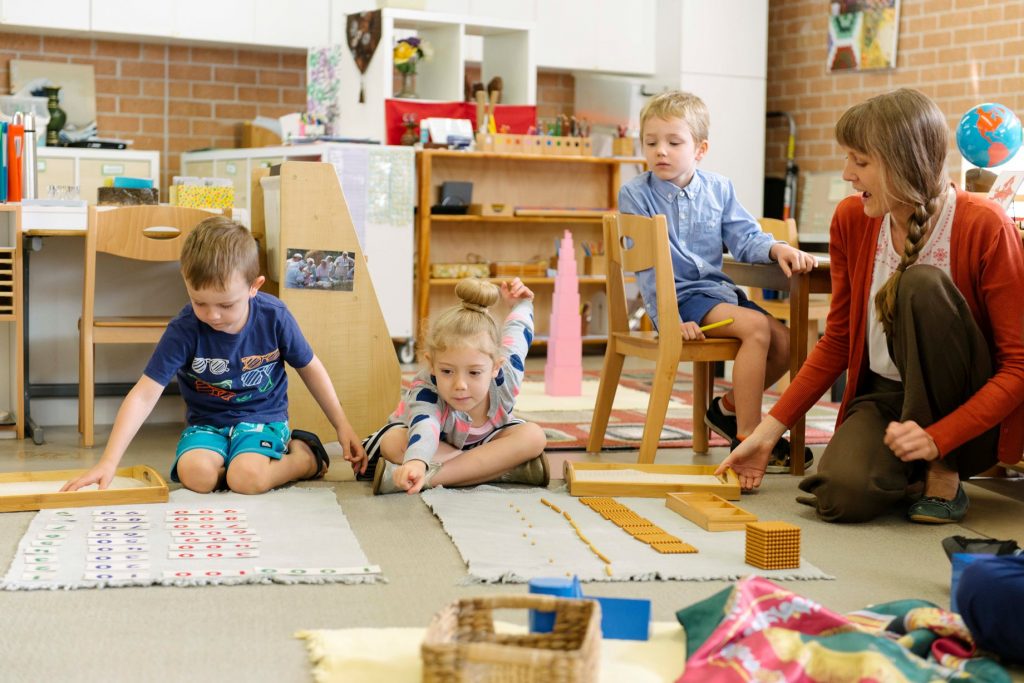By MIC Mum, Chris O’Leary
A few years ago my (then) 7 year old son refused to go to school swimming.
It was the last day of a week of daily swimming lessons – and he announced to his Guide he wasn’t going.
When she asked him why, he said he didn’t choose swimming and that the way the lessons are run ‘isn’t very Montessori’.
Two accurate points.
However…
The whole Junior Primary cohort had spent Monday to Thursday at the local swimming pool and, until then, he’d happily joined them.
Now, on Friday morning, he was adamant.
No swimming for him.

As I read the email from his Guide that afternoon I have to confess, I did smile.
That does sound like my son alright, I thought.
My son’s Guide knew him pretty well after more than two years in the 6-9 environment, so I was keen to read on and hear how this panned out.
She told him he was right – he hadn’t been given a choice and as the swimming instructors at the pool aren’t in any way Montessori trained, the approaches used in those lessons are not what he is used to.
Of course, my son needs to adapt to ‘non-Montessori’ environments – and he does that very well.
Other than school and home, everywhere he goes – from gymnastics class, to community soccer, to children’s birthday parties to camping trips with friends, to spending time with extended family – are not Montessori environments. He understands that perfectly.
But that day – he was digging his heels in.
Then his Guide told him – he DID have a choice.
He could come swimming with the others – or stay back at school. The choice was up to him.
He went swimming.
Of course he did!
This wasn’t about swimming. He LOVES swimming – we swim at our local pool and at the beach all summer long.
He just wanted a choice.
I’ve learnt that providing guided choices is a fantastic way to overcome opposition and reduce tension between parents and children (and Guides and children too, I’m sure).
It puts less focus on the parent and child – and more focus on the child and the task at hand.
It also gives the child a sense of responsibility – he makes the choice, so he wears the consequences – good or bad.
(It’s a similar reason why my sons make their own lunch. It’s an important skill and a step toward independence, but it also means they can’t complain about what is in their lunchbox each day!)
I love this quote from American writer Madeleine L’Engle:
“Because to take away a man’s freedom of choice, even his freedom to make the wrong choice, is to manipulate him as though he were a puppet and not a person.”
Children need choices. Having a choice to make gives a child power and autonomy where they might otherwise have none.
But there are a couple of things I’ve learnt along the way when trying this at home.
- Only offer choices you are prepared to live with
You never know what your child will choose – so even if it seems obvious what their choice might be, make sure you can live with it either way.
So, ‘Do you want to wear the red or the blue shorts?’ might work, whereas ‘Do you want to brush your teeth or go straight to bed without a story?’ might not give you the outcome you’re looking for (trust me).
2. Always follow through on your choice or limit
So, if you ask ‘Do you want to go to the park or the library today?’ – confident he will choose the library because he always does (and you’ve got books to return yourself and other things to do in that vicinity) – be prepared to follow through if he chooses the park!
Freedom of choice is a key feature of Montessori classrooms and – if we want our children to experience consistency between home and school – our homes as well.
Of course, it’s freedom within limits – not freedom to do anything you want – which is why it’s a good idea to have fewer choices, the younger the child.

It’s not about adults forcing children to obey their commands (as tempting as that can be at times). When a child spends every day following the instructions of adults, he loses the ability to think for himself. To know himself and his own interests.
No-one likes a ‘yes person’ – people who blindly follow the instructions of others aren’t going to be the big thinkers and innovators of tomorrow.
So next time your child says ‘no’ to a simple request to pack up, stop and take a breath and consider if there is a choice here for your child to make.
The choice to GIVE a choice, is yours.
With love,
Chris O’Leary (MIC Mum)
